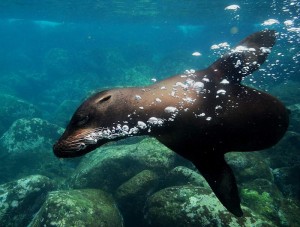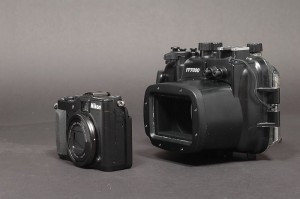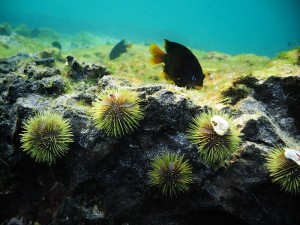I’ve just returned from another trip to the Galapagos Islands of Ecuador, and thanks to a new camera housing from Fantasea, brought home some nice shots from underwater as well as above.
When most people think of the Galapagos, they think of all the amazing animals found on the islands there. From the the iguanas to the giant tortoises and birds such as the Blue-footed Booby and Frigate, the archipelago teems with interesting and often one-of-a-kind wildlife. As fantastic as they are, the waters surrounding them are full of critters too. So when planning this trip, I wanted to be sure to take an underwater camera.
Last year Nikon introduced their new top-of the-line compact, the Coolpix P7000. It’s loaded with features and has the ability to shoot in RAW (NRW) format too. So when I heard that Fantasea was designing an underwater housing for it, I knew what I wanted to take on this trip. Telling people this, they sometimes asked, “Why don’t you just get an underwater housing for one of your Nikon DSLR’s?” And I’d answer with, “Do you know how much those housings cost?” They’re usually more expensive than the cameras they’re made to protect. Since I’d only be snorkeling, and don’t do that very often, I didn’t want to get a big, bulky, expensive housing. And now Fantasea could make that possible with the FP7000 housing (http://nikondive.com/FP7000_About.html). With full access to all controls and rated for depths up to 200-ft. (far

A Sea Lion checks me out. These guys are my favorite critters in the islands. Photo copyright Reed Hoffmann.
beyond where I’d be), it sounded perfect. And it was. Now I could get great quality without spending a fortune.
There are several challenges to shooting underwater. First is the clarity of the water. Close to shore, with much wave or current action, there will be a lot of stuff floating in the water making it difficult to get clear shots. The closer you are, the better in those cases. And, even a few feet underwater, the colors start to change. The deeper you go, the less color you get, due to the the water filtering it out. That’s one reason I wanted to shoot in RAW format, to have more ability to correct the color afterwards. And perhaps most importantly, as with most photography, the more time you spend around your subjects (in this case, in the water), the better your odds of success.
In the week there, we had several opportunities to snorkel, and I
took advantage of all of them. And that paid off. There were a few times we saw sea lions, but only once did one come close to me. We saw a lot of marine iguanas on land, and even saw them swimming a few times. But thanks to our guide Jorge, a few of us got to see one feeding underwater. Another time I came across nine rays swimming in formation. Then one afternoon, when we had a break, I walked to a nearby lagoon and spent about an hour floating near some fish feeding along the rocks. And I didn’t shoot just stills – while the iguana was feeding I shot some underwater video as well. It was a blast!
I’ve always enjoyed snorkeling in tropical waters, and being able to bring home some of those memories is priceless. With luck, I’ll have more opportunities in the future.



